The HTC One X for AT&T Review
by Brian Klug on May 1, 2012 6:00 PM EST- Posted in
- Smartphones
- Snapdragon
- HTC
- Qualcomm
- MSM8960
- Krait
- Mobile
- Tegra 3
- HTC One
- NVIDIA
The next major thing to talk about it HTC’s Sense 4. First off, all of the HTC Ones run Android 4.0.3 as of this writing, which was the first ICS build pushed to the android open source project. It isn’t 4.0.4, but that’s forgivable considering the timeframe involved. Anyhow, Sense is one of those things that traditionally has been a major point of contention for power users. The problem for an OEM crafting a theme or skin is to strike a balance between the native appearance and feel of the underlying base OS, and whatever unique customizations they’re adding.
For probably the first time, I can honestly say I think HTC has has nailed that balance with Sense 4. The platform still feels and looks ICSey, and I think that’s what made previous iterations of Sense somewhat awkward - you couldn’t adequately grasp the theme or feeling of the underlying OS. HTC has changed things like overscrolling behavior throughout the OS, as elements now spread apart like an accordion. Toggle switches and buttons also get a new theme, but it isn’t an altogether huge departure from ICS, and (as required) Holo is still lurking underneath for applications that leverage it.
Like previous iterations, Sense 4 includes a number of lock screen customizations, including the ability to launch applications or SMSes by dragging their shortcuts into the ring. Unlike the previous version, you don’t get the ability to change the lock screen shortcuts directly, instead they’re inherited from the bottom dock-like row of applications on the launcher. The launcher now includes ICS features like folders on the homescreen for organizing shortcuts, and a new widget, app, and shortcut management view.
The main launcher gives you a paginated 5x4 grid of application tiles. HTC has done similar things in the past with the bottom three tabs - all, frequent (sorted by number of launches), and new downloaded applications. There’s not much to say here other than it’s interesting how most stock launchers have returned to paginated structure instead of just a big scrollable list view. Both the launcher and main homescreens are very very smooth, thanks to the combination of ICS’s OpenGL ES 2.0 2D acceleration and MSM8960.
The other main Sense customizations include both messaging, keyboard, and the task switcher. HTC has opted to change the task switcher entirely; instead of ICS’s transparent column of recently launched applications, the HTC Sense 4 launcher is a row of full screen previews. Applications can be closed by swiping them up (hello WebOS cards…) or switched between by tapping on them.
Messaging has changed subtly since the previous version of Sense, and feels snappier. One of my complaints with Android in general has been how messaging seems to always slow down after a few weeks worth of SMSes accumulate, and so far I haven’t run into that wall. I still do think the compose box is too big and covers too much of the conversation, and the default font seems gigantic, but thankfully one can change that. The Sense 4 keyboard also feels improved, and I can type at full speed without issue. That said, I’ll never understand why OEMs continue to remove the stock keyboard entirely.
Another major design decision HTC has made is to go with the traditional USB disk drive mount option instead of MTP. I think we’ll see OEMs also go this route as the MTP connector on some platforms still leaves a lot to be desired. Sense 4 also leaves the notification shade virtually untouched - there aren’t any quick power settings or tabs, just the settings pane shortcut like stock ICS. All in all I feel like this is the new Sense 4 design language - minimalist and simple, not the self-justifying customization of every last window and view just for the sake of doing so.
Storage on the AT&T One X is 16 GB of integrated NAND. Like basically all Android phones, this is divided between an /sdcard mount point, and /data. Note that this architecture is basically required if you’re going to implement USB mass storage instead of using MTP.
shell@android:/ $ dfFilesystem Size Used Free Blksize/dev 335M 136K 335M 4096/system 1007M 895M 112M 4096/data 2G 696M 1G 4096/cache 251M 4M 247M 4096/devlog 19M 16M 3M 4096/mnt/asec 335M 0K 335M 4096/mnt/obb 335M 0K 335M 4096/firmware_radio 199M 33M 166M 4096/firmware_q6 199M 5M 193M 4096/firmware_wcnss 4M 1M 3M 2048/data/secure/data 335M 0K 335M 4096/data/DxDrm/fuse: Permission denied/mnt/sdcard 9G 1G 8G 32768
So you get 9 GB of storage for media and photos, and 2 GB for applications, which is pretty much the normal storage split I see. Like we discussed in our initial ICS piece, you can either get unified storage with MTP, or the less cumbersome mass storage mount method.
The last note is Beats Audio. HTC includes the Beats branding almost everywhere - it’s on the box, on the back of the device, on the boot splash images, and inside the OS. There’s no longer any Beats earbuds in the box, but a corresponding change in the way Beats works. The new change is that Beats now works for any headphones that you attach, instead of just Beats branded ones like previously. At some point I’m going to investigate Beats Audio integration in newer HTC devices more thoroughly, for now just know that new HTC devices give you the Beats DSP on any attached headphones. I will note that it sounds to me just like the Beats audio from the HP TouchPad, which is to say boosted bass and some dynamic range compression. I honestly prefer it off, but overall sound quality with it off is subjectively good - no background hiss or whine audible.
The rest of Sense is hardware related and involves another important consolidation - camera, which we’ll get into in the respective section.


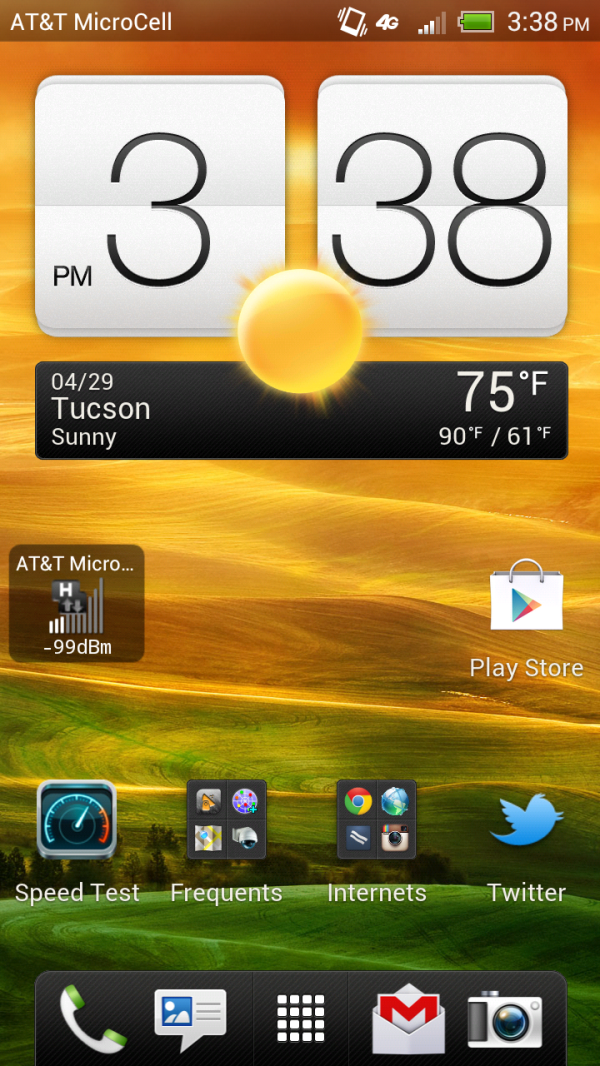
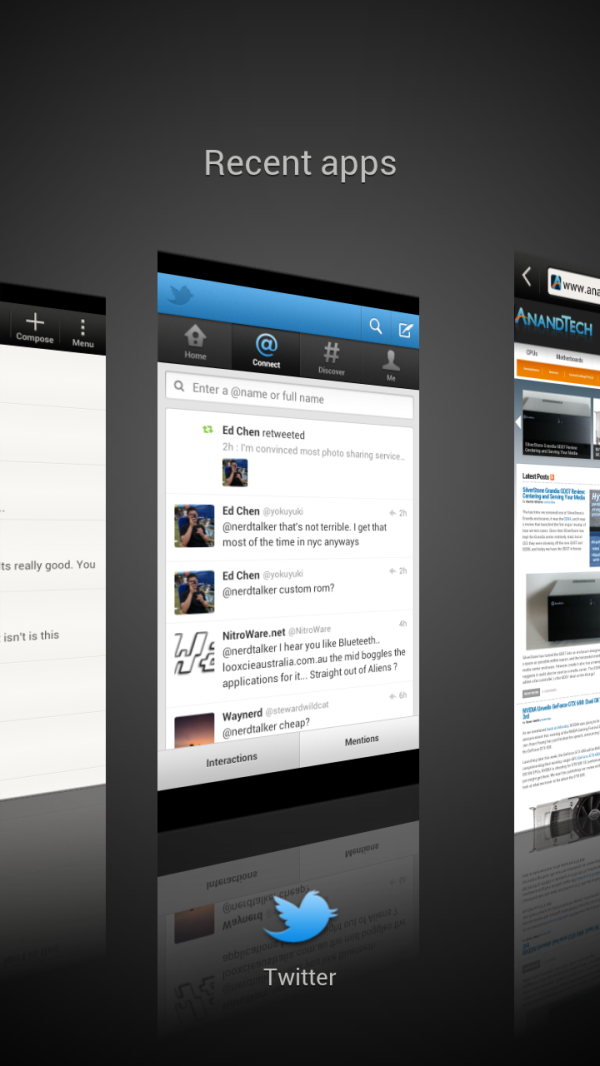
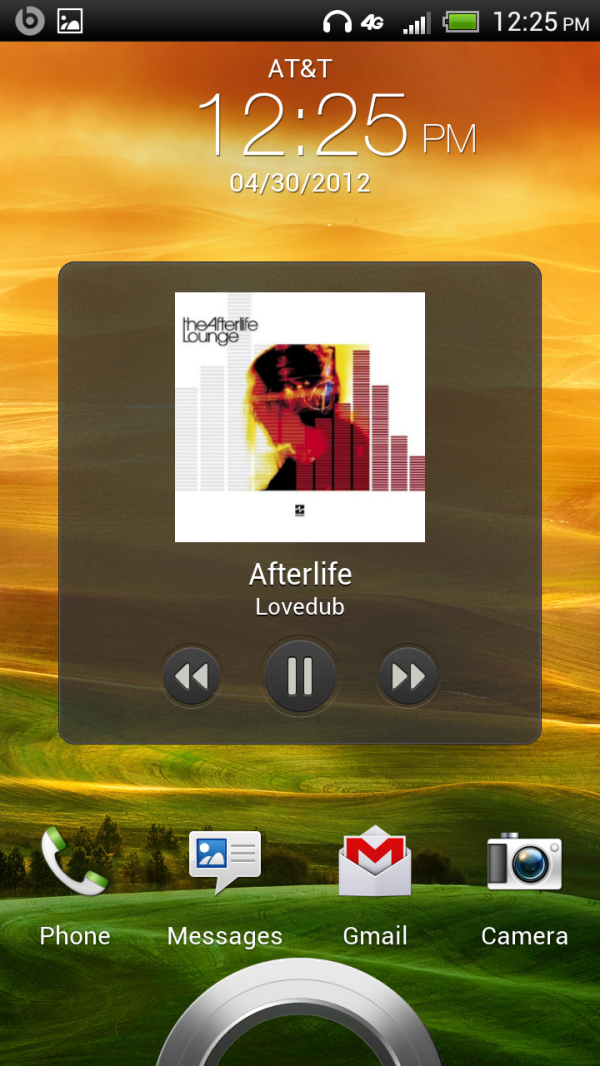
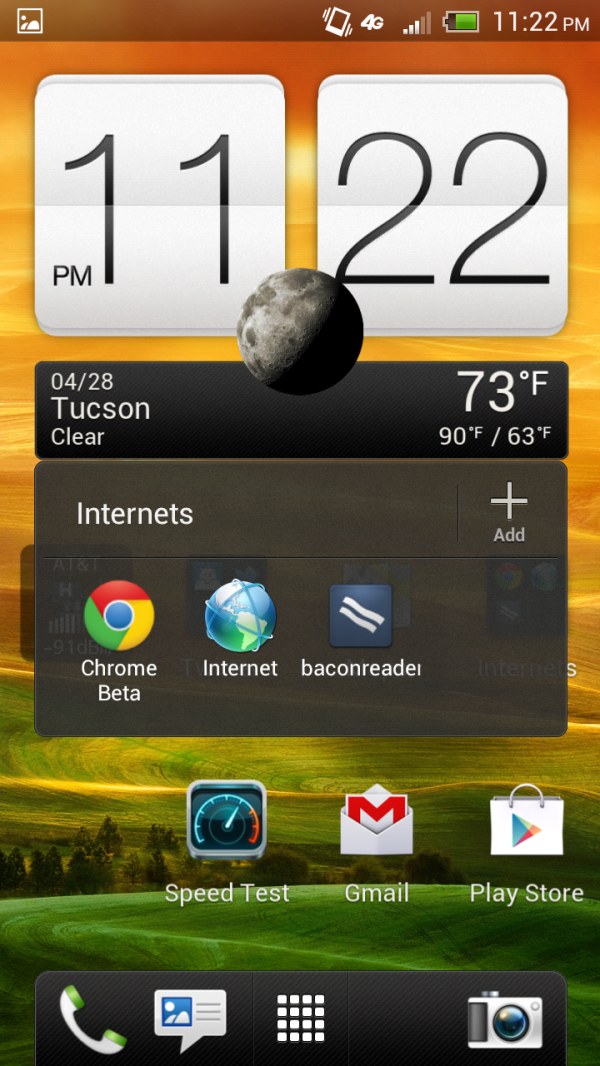
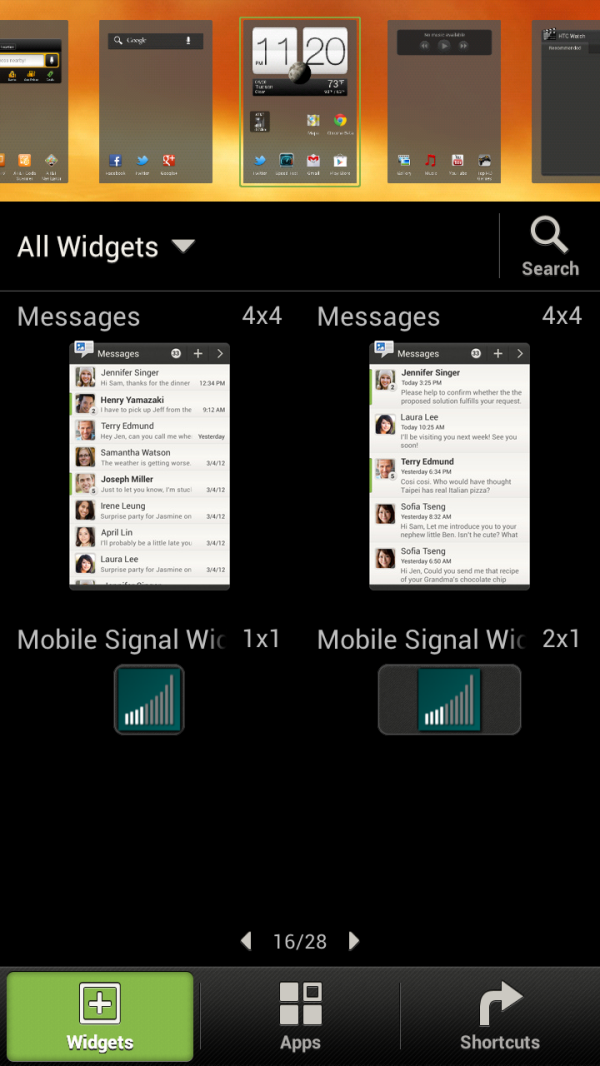


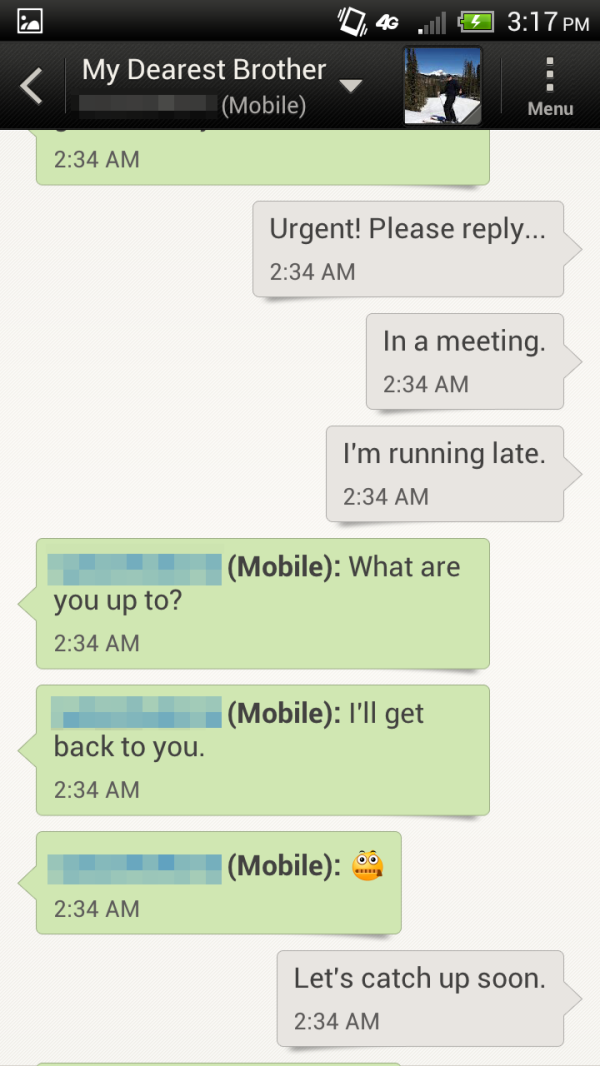

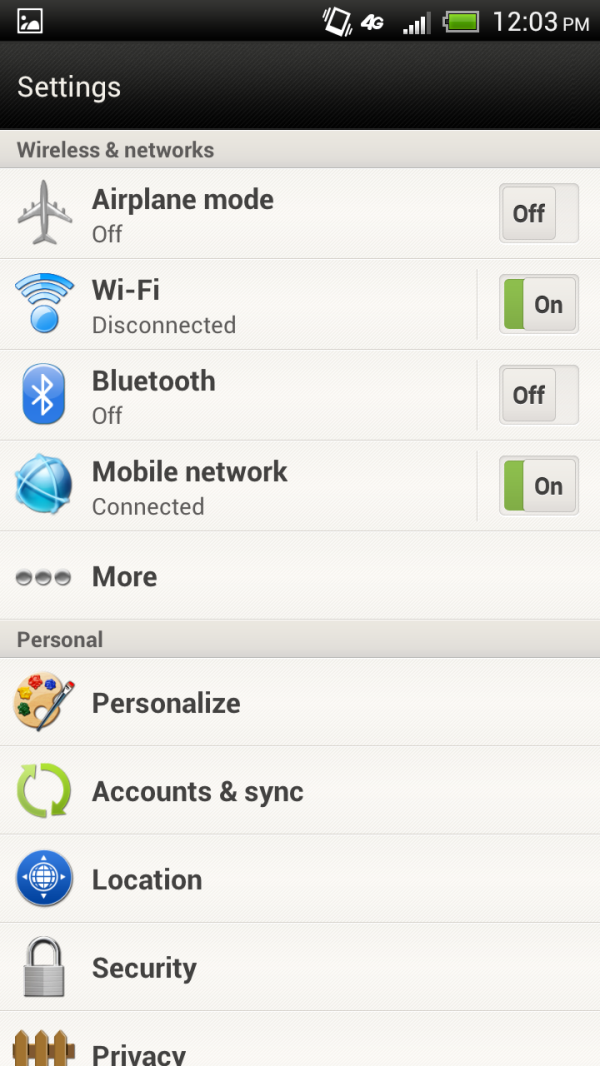
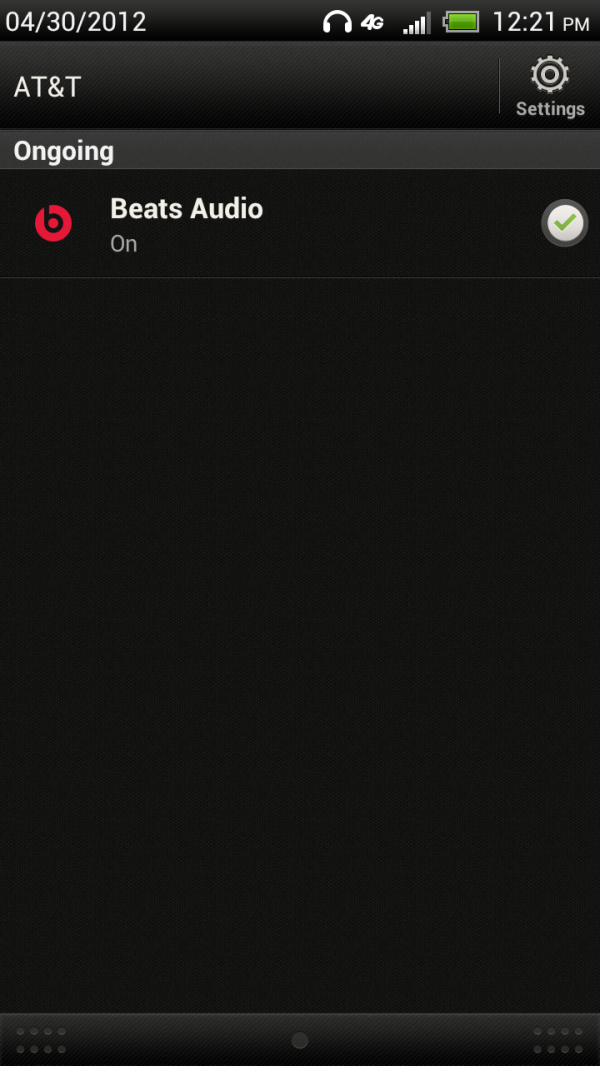








137 Comments
View All Comments
GTaudiophile - Wednesday, May 2, 2012 - link
I personally bought my first smartphone last week when Google started offering the Galaxy Nexus directly for $399. At first I thought I wouldn't like the screen size but after having used it for a few days, I can't imagine having something smaller. I received the phone in two days and have so far had zero issues. It came with ICS 4.0.4 installed.The biggest selling point for me is the pentaband 3G radio. As someone who is loyal to TMO USA AND a frequent business traveler to Europe, the pentaband 3G gives me a lot of flexibility that no other phone to-date can. If either the One S or X came with pentaband, I would have bought one, even though I do like having a stock Google OS.
I have no doubt the HTC One X and S are great, but I am happy with my Galaxy Nexus. I don't think it will have a problem getting me down the road for at least a year or two.
ectoplasmosis - Wednesday, May 2, 2012 - link
"I’m still waiting for a platform that can do 720p60 properly"That platform, here now, is an iPhone 4S paired with the SloPro app: http://itunes.apple.com/us/app/slopro/id507232505
The paid version can export raw 60fps files in 720p.
UltraTech79 - Wednesday, May 2, 2012 - link
I wonder how high the 4S can go, and if it ends up being limited by the SoC or the flash storage.nitrousoxide - Thursday, May 3, 2012 - link
3G time and LTE time are almost identical. Is the phone really running on LTE when you are testing?darklordkk - Thursday, May 3, 2012 - link
9GB and 2GB?? Why?? Taking into account formatting, that's only around ~13GB at max. Where'd the 3GB go??Even the ye olde Galaxy S i9000 had 16GB partitioned into 2GB for apps and data (1.85 shown) and 14GB for data (13.43 shown)..
One43637 - Thursday, May 3, 2012 - link
I'm always amazed at how in depth your reviews are AT. Love them, please keep up the great work!Great HW, I'm just slightly disappointed that the US version gets a neutered 16GB of storage, with no micro SD slot for expansion. I know the big deal was to use Dropbox to help augment that, but with really no true unlimited data options for the majority of wireless providers, this seems like a very big trap door.
I also have read somewhere that the AT&T version doesn't even include Dropbox like the international version. Great job AT&T and HTC... /facepalm
At least give me the option to buy a 32GB version!
vision33r - Thursday, May 3, 2012 - link
No MicroSD card, what good is a 720p screen when I can't carry all my animes and movies on the device. That means I can only store DivX lowres movies in order to fit in the built in storage.Lame, SGS3 will dominate sales.
glenns - Friday, May 4, 2012 - link
"The phone is machined, not injection molded, from a single machined piece of polycarbonate plastic, and feels anything but cheap in the palm."Can I ask where this bit of information came from ? As someone who works in the plastic moulding industry its just seems very unlikely on a mass produced product. I cant see any benefit from machining a thermoset plastic like polycarbonate as opposed to injection moulding
Mbonus - Friday, May 4, 2012 - link
I thought HTC was one of the manufacturers that was going to provide unlocked bl. Not so for the early released units.ArmedandDangerous - Sunday, May 13, 2012 - link
They already have, couple of weeks ago :)